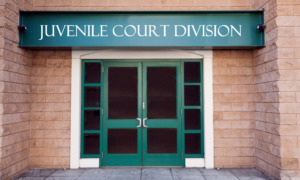This story was produced by The Hechinger Report, a nonprofit, nonpartisan news outlet focused on education.
Fifteen years ago, the Obama administration and philanthropic foundations encouraged more Americans to get a college degree. Remedial classes were a big barrier. Two-thirds of community college students and 40 percent of four-year college students weren’t academically prepared for college-level work and were forced to take prerequisite “developmental” courses that didn’t earn them college credits. Many of these college students never progressed to college-level courses. They racked up student loan debts and dropped out. Press reports, including my own, called it a “remedial ed trap.”
One controversial but popular solution was to eliminate these prerequisite classes and let weaker students proceed straight to college-level courses, called “corequisite courses,” because they include some remedial support at the same time. In recent years, more than 20 states, from California to Florida, have either replaced remedial classes at their public colleges with corequisites or given students a choice between the two.
In 2015, Tennessee’s public colleges were some of the first higher education institutions to eliminate stand-alone remedial courses. A 10-year analysis of how almost 100,000 students fared before and after the new policy was conducted by researchers at the University of Delaware, and their draft paper was made public earlier this year. It has not yet been published in a peer-reviewed journal and may still be revised, but it is the first longer term study to look at college degree completion for tens of thousands of students who have taken corequisites, and it found that the new supports haven’t worked as well as many hoped, especially for lower achieving students .
Students earned more credits at first, but graduation rates didn’t rise
First the good news. Like earlier research, this study of Tennessee’s two-year community colleges found that after the elimination of remedial classes, students passed more college courses, both introductory courses in English and math, and also more advanced courses in those subjects.
However, the extra credit accumulation effect quickly faded. Researchers tracked each student for three years, and by the end of their third year, students had racked up about the same number of total credits as earlier students had under the old remedial education regime. The proportion of students earning either two-year associate degrees or four-year bachelor’s degrees did not increase after the corequisite reform. Lower achieving college students, defined as those with very low ACT exam scores in high school, were more likely to drop out of college and less likely to earn a short-term certificate degree after the switch to corequisites.
“The evidence is showing that these reforms are not increasing graduation rates,” said Alex Goudas, a higher education researcher and a community college professor at Delta College in Michigan, who was not involved in this study. “Some students are benefiting a little bit – only temporarily – and other students are harmed permanently.”
[Related: Colleges are now closing at a pace of one a week. What happens to the students?]
It seems like a paradox. Students are initially passing more courses, but are also more likely to drop out and less likely to earn credentials. Florence Xiaotao Ran, an assistant professor at the University of Delaware and the lead researcher on the Tennessee study, explained to me that the dropouts appear to be different types of students than the ones earning more credits. Students with somewhat higher ACT test scores in high school, who were close to the old remedial ed cutoff of 19 points (out of 36) and scoring near the 50th percentile nationally, were more likely to succeed in passing the new corequisite courses straight away. Some students who were far below this threshold also passed the corequisite courses, but many more failed. Students below the 10th percentile (13 and below on the ACT) dropped out in greater numbers and were less likely to earn a short-term certificate.
Data from other states shows a similar pattern. In California, which largely eliminated remedial education in 2019, failure rates in introductory college-level math courses soared, even as more students also succeeded in passing these courses, according to a study of an Hispanic-serving two-year college in southern California.
Ran’s Tennessee analysis has two important implications. The new corequisite courses – as they currently operate – aren’t working well for the lowest achieving students. And the change isn’t even helping students who are now able to earn more college credits during the first year or two of college. They’re still struggling to graduate and are not earning a college degree any faster.
Two schools of thought
Some critics of corequisite reforms, such as Delta College’s Goudas, argue that some form of remedial education needs to be reintroduced for students who lack basic math, reading and writing skills.
Meanwhile, supporters of the reforms believe that corequisite courses need to be improved. Thomas Brock, director of the Community College Research Center (CCRC) at Teachers College, Columbia University, described the higher dropout rates and falling number of credentials in the Tennessee study as “troubling.” But he says that the old remedial ed system failed too many students. (The Hechinger Report is an independent news organization, also based at Teachers College but is unaffiliated with CCRC.)
“The answer is not to go back,” said Brock, “but to double down on corequisites and offer students more support,” acknowledging that some students need more time to build the skills they lack. Brock believes this skill-building can happen simultaneously as students earn college credits and not as a preliminary stepping stone. “No student comes to college to take remedial courses,” he added.
One confounding issue is that corequisite classes come in so many different forms. In some cases, students get a double dose of math or English with three credit hours of a remedial class taken concurrently with three credit hours of a college-level course. A more common approach is to tack on an extra hour or so to the college class. In her analysis, Ran discovered that instructional time was cut in half for the weakest students, who received many more hours of math or writing instruction under the old remedial system.
“In the new scenario, everyone gets the same amount of instruction or developmental material, regardless if you are just one point below the cutoff or 10 points below the cutoff,” said Ran.
There are also big differences in what takes place during the extra support time that’s built into a corequisite course. Some colleges offer tutoring centers to help students fill in their knowledge gaps. Others schedule computer lab time where students practice math problems on educational software. Another option is extended class time, where the main professor teaches the same material that’s in the college level course only more slowly, spread across four hours a week instead of the usual three.
Overcoming weak foundational skills is not the only obstacle that community college students face. The researchers I interviewed emphasized that these students are struggling to juggle work and family responsibilities along with their classes, and they need more support – academic advising, career counseling and sometimes therapy and financial help. Without additional support, students get derailed. This may explain why the benefits of early credit accumulation fade out and are not yet translating into higher graduation rates.
Even before the pandemic, the vast majority of community college students arrived on campus without a strong enough foundation for regular college-credit bearing classes and were steered to either remedial or new corequisite classes. High school achievement levels have deteriorated further since 2020, when the data in Ran’s study ended. “It’s not their fault,” said Ran. “It’s the K-12 system that failed them.”
That’s why it’s more important now than ever to figure out how to help under-prepared college students if we want to improve post-secondary education.
***
Jill Barshay writes the weekly “Proof Points” column about education research and data, covering a range of topics from early childhood to higher education. Previously, Barshay was the New York bureau chief for Marketplace, a national business show on public radio stations. She has also written for Congressional Quarterly, The Wall Street Journal, The New York Times and the Financial Times.
This story was originally published in The Hechinger Report, a national nonprofit newsroom that reports on one topic: education. Sign up for their weekly newsletters to get stories like this delivered directly to your inbox.

























